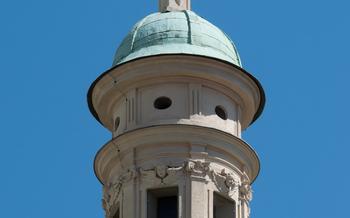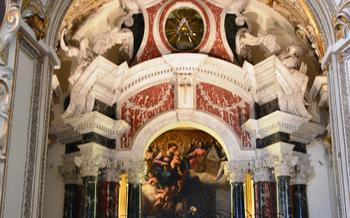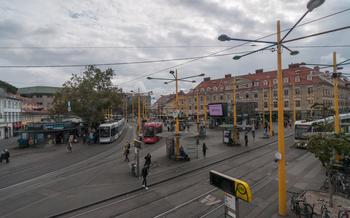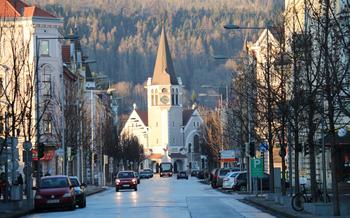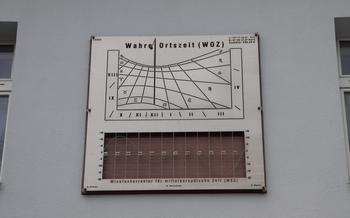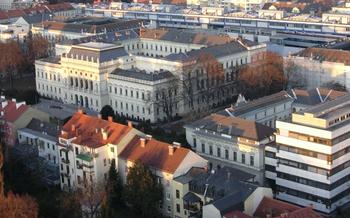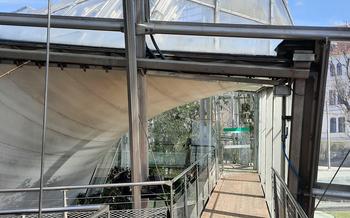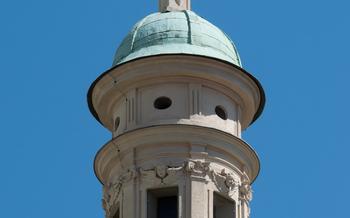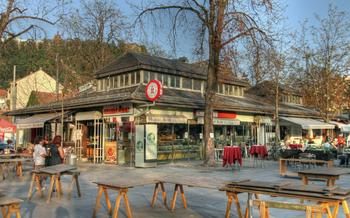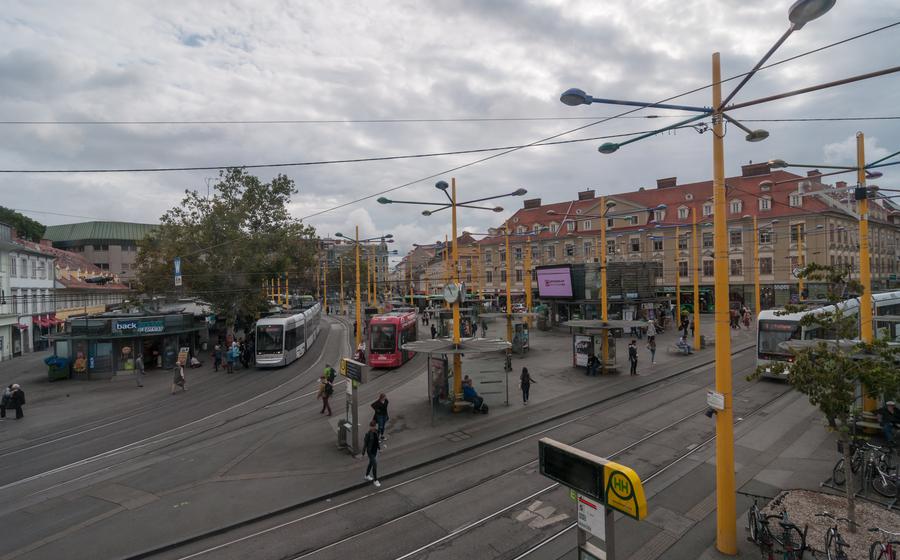
Lurgrotte Semriach (Cave System)
- The History of Lurgrotte Semriach
- The Lurgrotte Semriach: A Cave System Steeped in History and Mystery
- Natural Beauty
- Guided Tours
- Tour Highlights
- Legends and Folklore
- Practical Information
- Nearby Attractions
- Accommodation and Dining
- Best Time to Visit
- Accessibility and Mobility
- Photography and Videography
- Education and Research
- Insider Tip: Unearth Hidden Gems and Local Treasures
The History of Lurgrotte Semriach
The Lurgrotte, an awe-inspiring cave system nestled in the heart of Styria, Austria, has a rich history that dates back millennia. Archaeological discoveries indicate human presence in the caves as early as the Bronze Age, suggesting that the Lurgrotte served as a shelter or a ceremonial site for ancient civilizations.
Over the centuries, the caves remained largely unexplored until the 19th century when a group of local explorers ventured into its depths, unearthing a treasure trove of natural wonders. These intrepid explorers mapped the intricate network of tunnels, chambers, and underground rivers, shedding light on the cave's complex geological formations and diverse ecosystem.
The Lurgrotte played a pivotal role in the development of speleology, the scientific study of caves. Renowned speleologists from around the world flocked to Semriach to conduct research, unraveling the mysteries of the subterranean realm and contributing to our understanding of cave ecosystems, geology, and hydrology.
The Lurgrotte's significance extends beyond its scientific value. Its stunning beauty and unique geological features have captivated visitors for centuries, transforming it into a popular tourist destination. The cave's intricate stalactites and stalagmites, underground waterfalls, and diverse cave fauna offer a glimpse into the Earth's hidden wonders, inspiring awe and wonder in all who visit.
The Lurgrotte Semriach: A Cave System Steeped in History and Mystery
Location: A Hidden Treasure in the Heart of Austria
The Lurgrotte Semriach is nestled in the picturesque town of Semriach, approximately 25 kilometers north of Graz, the capital of Styria. The cave system is easily accessible by car via the A9 motorway, with ample parking available at the site. Visitors can also reach the Lurgrotte by public transportation, taking a train to Semriach station and then a short bus ride to the cave entrance. The convenient transportation options make it an ideal destination for both local residents and tourists exploring the region.
Natural Beauty
The Lurgrotte Semriach showcases a remarkable array of geological formations that have been shaped by millions of years of water erosion. As you venture deeper into the cave system, you'll be greeted by a dazzling display of stalactites and stalagmites in various sizes, forms, and colors. These intricate mineral deposits, formed by the slow dripping of water containing dissolved minerals, create a mesmerizing spectacle of natural art.
One of the highlights of the cave is the mesmerizing underground river known as the "Blue Lake." This crystal-clear body of water shimmers with an ethereal blue hue, reflecting the light that filters through the cave's openings. The sound of gently flowing water adds to the serene ambiance, creating a calming and tranquil atmosphere.
The diversity of cave fauna is another captivating aspect of the Lurgrotte. The cave provides a habitat for a wide range of creatures that have adapted to the unique conditions of the subterranean environment. You may encounter blind cave salamanders, spiders, and various species of insects, all of which play a crucial role in maintaining the cave's delicate ecosystem.
Guided Tours
The Lurgrotte Semriach offers guided tours that take visitors through the enchanting chambers and passages of the cave system. These guided tours are available daily and are led by experienced guides who share their knowledge about the cave's history, geology, and local legends. The tours typically last for about 45 minutes and cover a distance of approximately 1 kilometer, making them suitable for visitors of all ages and fitness levels.
The tours are conducted in German, but audio guides in English and other languages are available for international visitors. The cost of the guided tour is included in the entrance fee, and it is advisable to book your tour in advance to avoid disappointment, especially during peak tourist season.
The knowledgeable guides will lead you through the cave, pointing out the most impressive formations and sharing captivating stories about the cave's history and legends. You'll learn about the formation of the cave, the unique flora and fauna that inhabit it, and the role it has played in local folklore and mythology.
Tour Highlights
The Lurgrotte Semriach offers a captivating journey through a mesmerizing subterranean world. Guided tours lead visitors through its labyrinthine passages, revealing the cave's most remarkable features.
One of the tour highlights is the awe-inspiring "Giant Hall," the largest chamber within the cave system. This vast underground cathedral features towering stalactites and stalagmites, creating a surreal and majestic atmosphere. Visitors can marvel at the intricate formations that adorn the hall's walls and ceiling, each one a testament to the relentless work of water and time.
Another captivating attraction is the "Dragon's Head" formation, a striking stalactite that resembles the head of a mythical dragon. Legend has it that the dragon once guarded the treasures hidden deep within the cave. Visitors can let their imaginations soar as they gaze upon this impressive formation, evoking tales of bravery and adventure.
Finally, the tour culminates at the "Blue Lake," an underground lake with crystal-clear waters that reflect the shimmering light of the cave's walls. This tranquil spot offers a moment of serenity and contemplation, allowing visitors to appreciate the pristine beauty of the natural world.
Legends and Folklore
The Lurgrotte Semriach is shrouded in an aura of mystery and intrigue, inspiring numerous legends and tales that have been passed down through generations. One of the most captivating legends is that of the "Lurg Dragon," a mythical creature said to inhabit the depths of the cave. According to local folklore, the dragon fiercely guards a vast treasure hidden within the cave's labyrinthine tunnels.
Another intriguing legend tells the story of lost explorers who ventured deep into the Lurgrotte, never to be seen again. It is whispered that their spirits still wander the cave's chambers, searching for a way out. These tales of hidden treasures and lost souls add an air of enchantment to the Lurgrotte, captivating visitors with their timeless allure.
Practical Information
The Lurgrotte Semriach is open to the public for guided tours daily. Opening hours vary depending on the season, typically from 9:00 AM to 5:00 PM, but it's always advisable to check the official website or contact the tourist office for the most up-to-date information.
The cost of admission is reasonable, with discounts available for children, students, and families. Family tickets are available for families with children under Once inside, visitors can enjoy the convenience of several facilities, including a well-maintained parking area, restrooms, and a small café offering refreshments and snacks. The site is generally well-maintained, ensuring a safe and enjoyable experience for visitors of all abilities.
The Lurgrotte is accessible for visitors with disabilities. There are ramps and elevators to facilitate easy movement throughout the cave. Visitors with visual or hearing impairments can also take advantage of audio guides and tactile displays to enhance their experience.
Nearby Attractions
The Lurgrotte Semriach is situated in a region rich in natural beauty and cultural heritage. Venturing beyond the cave system, visitors can discover a multitude of other attractions in the surrounding area.
Hiking Trails and Scenic Viewpoints:
The idyllic landscapes around the Lurgrotte offer a haven for hiking enthusiasts. Numerous well-marked trails wind through picturesque valleys, lush forests, and rolling hills. Ascend to panoramic viewpoints that unveil breathtaking vistas of the Styrian countryside.
Cultural and Historical Landmarks:
Immerse yourself in the region's rich history and cultural heritage by visiting nearby landmarks. Explore medieval castles, ancient churches, and charming historical towns. Discover the stories and legends that have shaped this fascinating corner of Austria.
Opportunities for Outdoor Activities:
The region surrounding the Lurgrotte provides ample opportunities for outdoor recreation. Engage in thrilling activities such as mountain biking, rock climbing, and paragliding. Indulge in refreshing swims in crystal-clear lakes or embark on scenic boat trips along tranquil rivers.
Accommodation and Dining
When planning your trip to the Lurgrotte Semriach, you will need to consider accommodation and dining options in the surrounding area. Several charming guesthouses and hotels are located in the picturesque town of Semriach, offering a range of options to suit different budgets and preferences. These accommodations provide a comfortable base for exploring the cave system and the surrounding region.
For a truly immersive experience, consider staying in one of the traditional Styrian farmhouses, known as "Buschenschänke." These family-run establishments offer cozy rooms, local cuisine, and an opportunity to learn about the region's rich agricultural heritage.
In terms of dining, the Semriach area boasts a variety of restaurants serving both traditional Austrian fare and international cuisine. Indulge in hearty regional specialties such as "Schnitzel" (breaded cutlet), "Käsespätzle" (cheese noodles), or "Kaiserschmarrn" (shredded pancake). For a taste of international flavors, there are several restaurants offering Italian, Asian, and Mediterranean cuisine.
If you are on a budget, consider packing a picnic lunch and enjoying it in one of the scenic spots near the Lurgrotte. Several picnic tables are available in designated areas, allowing you to savor your meal while surrounded by nature.
Best Time to Visit
The Lurgrotte Semriach welcomes visitors throughout the year, but the best time to visit is undoubtedly during the summer months (June to August). The weather is pleasant, with warm temperatures and plenty of sunshine, making it ideal for outdoor activities and exploring the surrounding area.
The cave system maintains a relatively constant temperature of around 10 degrees Celsius (50 degrees Fahrenheit), providing a refreshing escape from the summer heat. Additionally, the longer daylight hours allow for more time to enjoy the natural beauty of the region and explore nearby attractions.
However, it's worth noting that the summer season also tends to be the busiest, with more tourists visiting the cave. To avoid crowds and ensure a more intimate experience, consider visiting during the shoulder seasons (May-June and September-October). The weather is still pleasant during these months, and you'll likely encounter fewer visitors.
If you're particularly interested in photography, consider visiting the cave during the winter months (November to April). The lower light levels and lack of crowds create a unique atmosphere, perfect for capturing stunning and atmospheric shots. Just remember to dress warmly, as the temperatures can drop significantly during this time.
Accessibility and Mobility
The Lurgrotte Semriach is committed to ensuring an accessible and welcoming experience for visitors of all abilities. The cave is equipped with ramps and elevators, making it fully accessible for wheelchair users and visitors with limited mobility. Guided tours are also available in sign language and with audio descriptions for visitors with visual or hearing impairments.
For those who prefer a more independent exploration, wheelchairs are available for rent at the visitor center. Additionally, trained staff is on hand to provide assistance and guidance to visitors with disabilities throughout their visit, ensuring a safe and enjoyable experience for all.
Photography and Videography
Photography and videography are permitted within the Lurgrotte Semriach, but certain regulations must be followed to preserve the natural beauty of the cave system.
-
Flash photography is strictly prohibited as it can damage the delicate cave formations and disturb the cave's ecosystem. Natural light or low-light photography techniques are recommended to capture the cave's splendor without causing harm.
-
Tripods and monopods are not allowed within the cave to minimize the risk of damage to the cave formations and to ensure the safety of visitors.
-
Respect the privacy of other visitors and avoid taking photos or videos of them without their consent.
-
Commercial photography and videography require prior permission from the Lurgrotte administration. Please contact them in advance to obtain the necessary permits and ensure compliance with their policies.
-
Share your experiences responsibly. When sharing photos and videos of the Lurgrotte online, please consider the impact on the environment and the privacy of other visitors. Tag your posts appropriately and use hashtags related to the cave to connect with other enthusiasts.
Education and Research
The Lurgrotte Semriach is not merely a tourist attraction but also a significant site for education and research. The cave system offers a unique opportunity for scientific exploration, particularly in the fields of geology, paleontology, and biology. Educational programs and workshops are conducted throughout the year, catering to students of all levels, from primary school to university. These programs aim to foster an appreciation for the natural world and encourage the next generation of scientists.
Researchers have conducted extensive studies within the Lurgrotte, shedding light on its geological formations, fossil record, and diverse cave fauna. The cave's well-preserved environment has provided valuable insights into past climates and ecosystems. Moreover, ongoing research projects focus on the conservation and management of the cave's unique features, ensuring its preservation for future generations.
Insider Tip: Unearth Hidden Gems and Local Treasures
Venture off the beaten path and discover the hidden wonders of the Lurgrotte Semriach and its surroundings. Explore the secluded "Crystal Chamber," where delicate calcite crystals shimmer like diamonds under the dim cave light. For a unique perspective, embark on a nighttime tour of the cave system, when the darkness reveals a different, more mysterious side of the Lurgrotte.
Beyond the cave, immerse yourself in the local culture and traditions of Semriach. Visit the nearby "Lipizzaner Stud," home to the world-famous Lipizzan horses, and witness their graceful performances. Don't miss the opportunity to indulge in the region's culinary delights, such as the hearty "Styrian Backhendl" (fried chicken) or the sweet "Kürbiskernöl" (pumpkin seed oil). Engage with the friendly locals, who are always eager to share stories and insights about the region's rich history and traditions.
